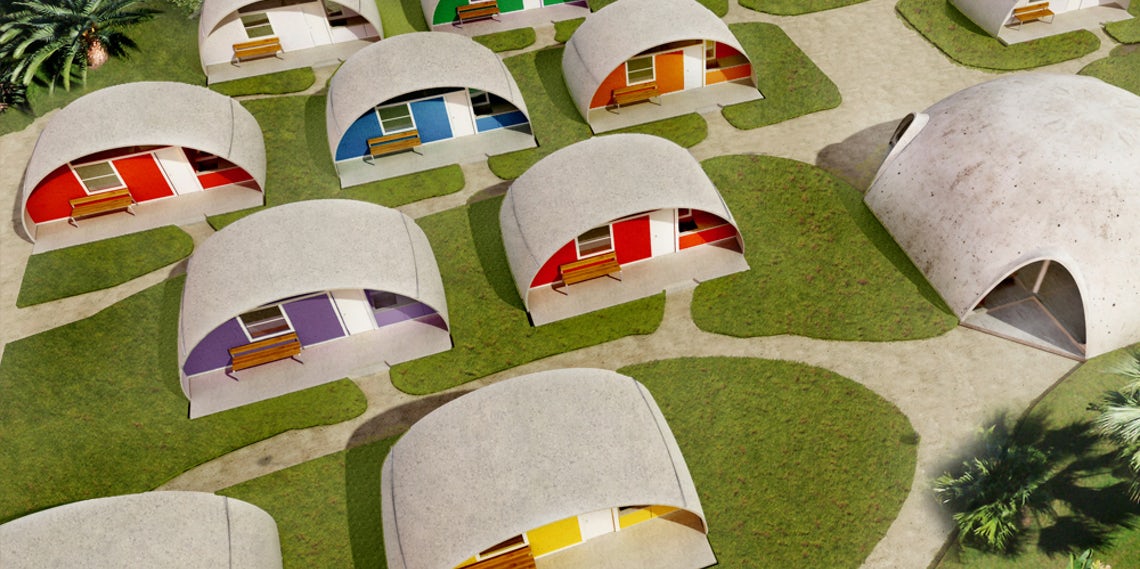
Architects: Showcase your work and find the perfect materials for your next project through Architizer. Manufacturers: To connect with the world’s largest architecture firms, sign up now.
Remember the DIY days of covering balloons with lots of glue, scraps of paper and paint, and then popping said balloons to reveal a masterfully created bowl? Well, imagine doing paper maché on a larger scale — a muchlarger scale. The Binishell, an idea for inflated concrete domes dreamed up by Dr. Dante Bini in the 60s, is basically that same concept brought to life.
A large, heavy-duty balloon gets covered with flexible steel rods and concrete before the balloon is inflated while the concrete is still wet. Once it hardens, the balloon is removed. The balloon can then be reused to fill another domed building. It’s a quick way of building structures, with construction taking just a few days. Because of its shape, it’s also much more energy efficient than the traditionally built house.
Yes, the resulting structure seems a little bit archaic, it’s strange, and it might be difficult to convince people to live beneath cave-like domes of concrete. But, Nicoló Bini, son of the Binishell mastermind, thinks these bungalows are viable architectural options for constructing spaces in developing countries, and he’s been on a mission to prove it.
He is interested in applying the Binishell technique as a way to provide shelter, low-cost housing, and other facilities (schools, military bases, sports stadiums) for displaced people, refugees and evacuees. The original Binishell, which is over 50 years old, still stands in all its glory despite having been exposed to some extreme conditions like volcanic eruptions and recurring earthquakes on Mount Etna.
Unlike traditional disaster relief shelters that pop up all over the place in times of distress, Binishells are intended to be permanent. The majority of the materials can be locally sourced and the building technique can be learned extremely quickly.
The domed shape of the Binishell is inherently aerodynamic, providing some extra protection from hurricanes, and it is suitable for green roofs and their maintenance. However, with such a seamless membrane, there are some difficulties with wire routing.
Even though these domes are reminiscent of a sci-fi film, and the aesthetics and practicalities of living in a domed structure will take a lot to get used to, returning to old concepts for solutions to recurring problems should be applauded. Besides, all the big celebrities are on board — are you?
Avots: architizer